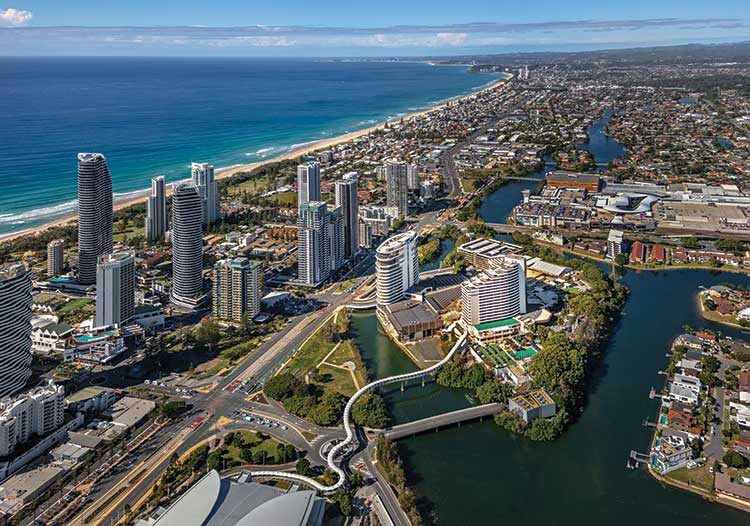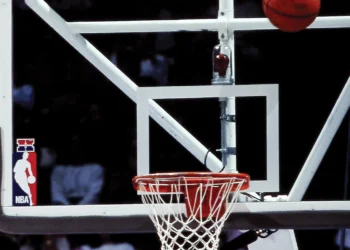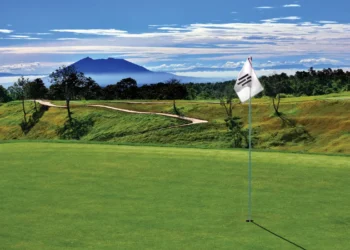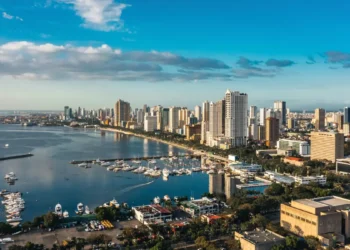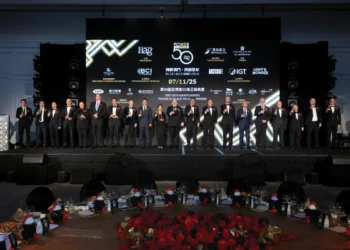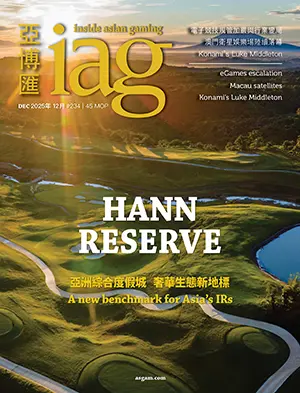The Queensland state government has revived plans for a second casino on Australia’s Gold Coast holiday strip, but the operator of existing property The Star Gold Coast says there isn’t room for two.
Spanning a 414-square kilometer parcel of land in Queensland’s southeast corner and with its 57km of coastline a picture perfect postcard of white sandy beaches on aqua blue ocean, Australia’s Gold Coast has visions of becoming the country’s next international tourist destination. But exactly how it plans to achieve that remains the billion dollar question.
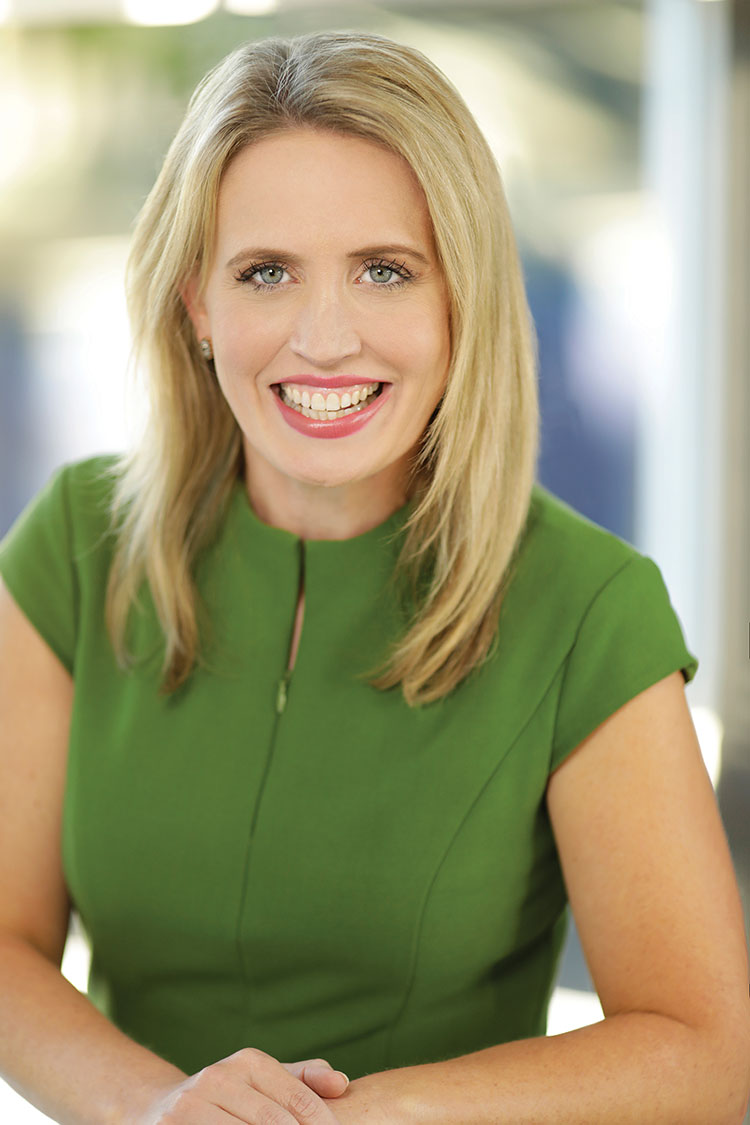
Seven years since the state government announced it would offer two gaming licenses to develop world class integrated resorts in regional Queensland, including a second casino on the Gold Coast, there is still no clarity as to likely development sites, operator candidates or whether the project will go ahead at all.
The government says it will, having put the second casino discussion back on the agenda in March when it called for Expressions of Interest in developing a Global Tourism Hub. The EOI, coming almost two years after the original process was terminated due to environmental concerns over the chosen site, essentially means that Queensland’s grand tourism plan finds itself back where it all began in 2012.
But the landscape has changed since then. In 2015, while politicians were distracted by a state election, Star Entertainment Group – owners of the Gold Coast’s original Jupiter’s casino – threw a spanner in the works by announcing its own redevelopment plans, which four years and AU$1 billion later has seen the long-neglected property transformed into The Star Gold Coast.
Now the company has a clear message for those pushing a second Gold Coast casino: there ain’t room for two.
GLITTER STRIP
Located about 80km south of Brisbane, the Gold Coast has long battled contrasting identities. Blessed with some of Australia’s most spectacular ocean beaches, it is both a popular family holiday destination boasting four famous theme parks – Dreamworld, Seaworld, Wet’n’Wild and Warner Bros. Movie World – and a colorful adults’ playground highlighted by the bar and club strip of Cavill Avenue and the annual schoolies celebration that sees thousands of high school graduates converge for a raucous week-long party.
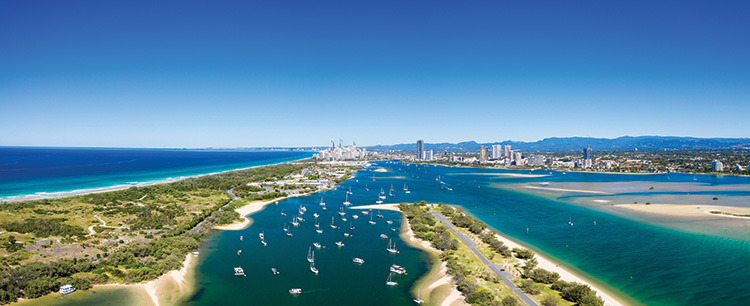
But it is also one of the fastest growing regions in the country. With an annual growth rate ranging between 1.28% and 2.25% over the past eight years, the Gold Coast’s population is expected to rise by 100,000 between 2018 and 2025 to nearly 750,000, placing it sixth among all Australian cities. Demographers predict that by 2035 the corridor connecting the Gold Coast and Brisbane will boast roughly the same population as Sydney.
Those numbers are matched by rising tourism, with a record 12 million domestic tourists in 2018 including 4 million overnight visitors. But it is the international market, numbering just over 1 million last year, that stakeholders have in their sights.
UPPING THE ANTE
“This Gold Coast opportunity will be a new magnet for millions more annual visitors – in particular international visitors,” says Queensland Tourism Minister Kate Jones. “A world-class catalytic project will take the Gold Coast and its cherished tourism offering to a whole new level.”
China, already the Gold Coast’s largest international market, is top priority. Australia’s number one source market with 1.3 million visitors per year, it is estimated that number will triple by 2027 to 3.9 million of which the Gold Coast wants a bigger slice.
However, “the share of this increased tourism to Queensland is not guaranteed,” according to a Queensland government spokesman.
“The Chinese demand high quality branded facilities and unique experiences. The Gold Coast must change to meet target market expectations, to protect its market share and to capitalize on this opportunity.”
When the second casino concept was first proposed by the former Liberal government back in 2012, the idea was to attract private sector money to deliver a massive AU$7.5 billion development centered around a new cruise ship terminal at an idyllic location known as The Spit, plus hotels, a marina, retail, entertainment, hospitality, public space and recreation facilities. A gaming license was dangled as a potential carrot if the winning bidder met all necessary environmental, planning and regulatory approvals.
Chinese-backed ASF Group was ultimately named as preferred developer in 2014, giving it first right to come up with a suitable design, but those plans changed after the 2015 state elections with the opposition Labor Party sweeping into power and quickly terminating the cruise terminal concept. A revised AU$3 billion casino-resort proposal from ASF was also rejected and the project killed off for good in 2017 amid intense community lobbying.
ASF, for its trouble, received a AU$9 million compensation payout for costs incurred while the second casino discussion was abandoned completely and looked to be dead in the water until its sudden revival in March this year.
A STAR IS BORN
In August 2018, Star Entertainment Group began construction of its AU$450 million Dorsett Hotel – a 53-storey tower featuring a 316-room hotel and 423 apartments on The Star Gold Coast’s 6-acre site in Broadbeach. The Dorsett follows AU$100 million already invested in upgrading the original Jupiter’s, another AU$50 million in additional restaurants and AU$450 million to develop lavish six-star hotel The Darling, which opened early last year.
That’s quite an investment for a company already committing AU$3.6 billion to its flagship Queen’s Wharf Development in Brisbane and another AU$500 million in Sydney, but The Star Gold Coast is already proving a game-changer.
In the six months to 31 December 2018, the revamped property recorded an 11.8% year-on-year increase in visitation, 22.6% increase in normalized revenue and 90.9% increase in VIP turnover, more than double that of Crown Perth. VIP gaming wasn’t even part of the offering at Jupiter’s but such has been the transformation that The Star Gold Coast now has legitimate claims to the best offering in Australia, including distinctly China-facing VIP gaming rooms and a supremely elegant premium gaming space called the Sovereign Room.
“The reason we’ve made this investment in the Gold Coast is really because it’s a very attractive long-term market,” explains Star Entertainment Group CEO Matt Bekier.
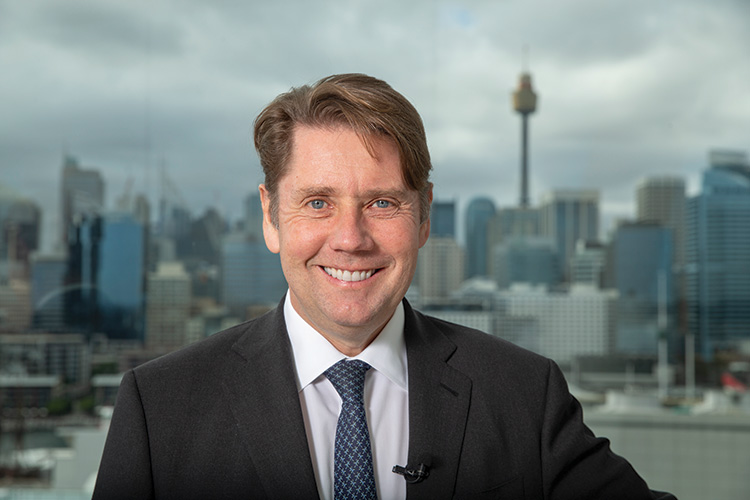
“We own the site, the license is in perpetuity and it allows us quite a few slot machines and unlimited tables. The tax rate is competitive and if you look at migration into Australia it’s also one of the fastest growing areas.
“So all the fundamentals were very attractive for us, it’s just that the property as it stood was looking very tired. The previous owners hadn’t spent very much money on it, but we believe in the market and we’re backing it with our investment.”
Although The Star Gold Coast will be the smallest of the group’s three IRs once Queen’s Wharf opens in 2022, Bekier says it will provide a valuable point of difference that can complement the grandeur of its Brisbane development.

“The Gold Coast is a very unique proposition,” he explains. “It’s the only IR of this type, up-scale, probably in the world where you can be within an hour of the city but you’re at the beach, you can see the beach from the property, you’ve got the biggest shopping centre in Southeast Queensland right next door … it’s an opportunity for us to diversify the experience and extend the trip length. We see Gold Coast and Brisbane working in tandem as the two components to keep people in Queensland.”
Star isn’t done yet, either. In November last year, the company and its Chinese equity partners, Hong Kong jewelry giant Chow Tai Fook and property developer Far East Consortium, revealed their Gold Coast masterplan – an additional US$2 billion investment concept comprising four more towers on its Broadbeach site. The vision, Bekier says, is to offer guests a variety of hotel options at widely different price points in order to broaden its customer base.
“China is now the largest source market for Australia and although it has slowed down a little bit lately, the long-term trends are compelling,” he explains. “We have not really participated substantially in that market yet because we don’t have enough hotel rooms. We’d love to have more and that’s why we’re building it out.”
MOVING FORWARD
The Queensland Government says its intention for a Global Tourism Hub isn’t to build a second casino but to grow the state’s tourism experiences. Gaming, it adds, would be limited to 5% of floor area.
“We have confidence our competitive process will deliver a better outcome for the people of the Gold Coast,” offers Innovation and Tourism Industry Development Director General, Damien Walker.
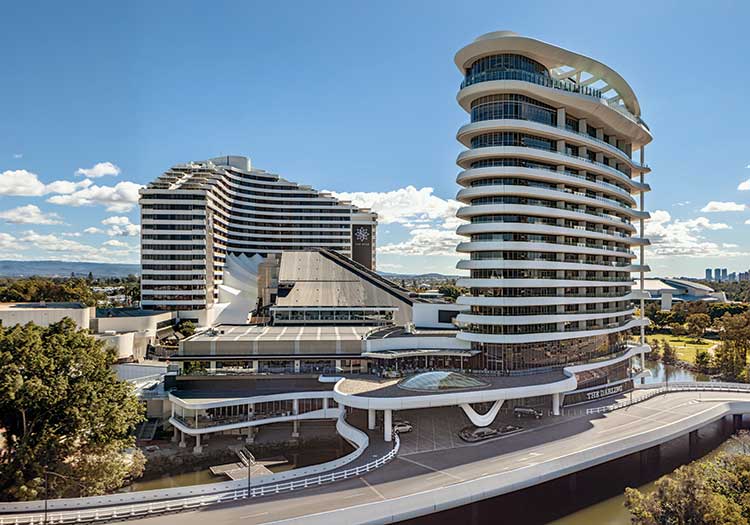
“Queensland is envious of the successes of Singapore, Macau and Las Vegas in securing new and reinvestments leading to jobs and opportunities, especially for its locals and Queensland-based suppliers.”
According to Walker, the successful bid must include entertainment venues, convention space, premium dining and retail and luxury hotels.
But just where that bid might come from remains to be seen. At least three overseas operators have now pulled out of the running – not all them publicly – with one telling IAG it held concerns about the size of investment needed, ROI and land parcels it described as smaller than expected. Although no definitive site has yet been chosen, with up to 11 possible locations touted, the operators said they had been shown only two sites during scouting trips of which Carey Park – about eight kilometers north of The Star on 10 hectares of land – was the standout. The other, they claimed, was too far inland and of little appeal.
Nevertheless, Tourism Minister Jones insists there remains no shortage of international candidates.
“The former LNP government first proposed an integrated resort for the Coast because they recognized the tourism industry needed new infrastructure to grow and the city was big enough for a world class integrated resort,” she said in a statement sent to IAG.
“This process is about bringing forward new tourism infrastructure for the Gold Coast that the proponent is actually legally and contractually obliged to deliver, not just pretty pictures.
“I have met with the Gold Coast integrated resort team and they continue to advise that there are still many proponents in the current procurement process.
“I can also advise that more than 10 of some the world’s largest entertainment organizations from Asia and the US are excited about the possibility of investing in the Coast.”
There could also be one other former protagonist interested in developing a Global Tourism Hub, according to Credit Suisse analysts Larry Gandler and Alice Li, with ASF one of two organizations (alongside Star Entertainment Group) exempt from the initial Expressions of Interest phase. Coincidentally, ASF has acquired a plot of land right alongside Carey Park where it has received development approval to build a 66-storey luxury hotel and residential tower.
COLLISION COURSE
The government’s decision to revive its push for a second Gold Coast casino didn’t sit well with The Star.
“On our analysis, the market is not big enough for two casinos and all a second casino would do is force us to essentially aggressively compete for local business as opposed to trying to position the property to try and bring more international traffic to the site,” Bekier says. “We don’t believe that is the right thing for the Gold Coast and on that basis we object.
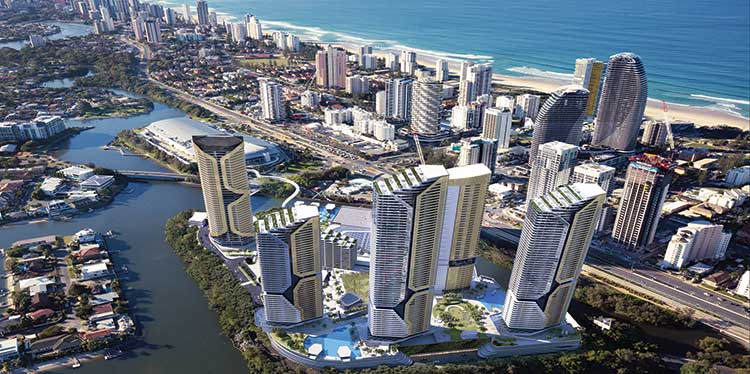
“We also object because we are a massive investor in the Gold Coast. As it is we have an exciting plan and we believe for the good of the Gold Coast the best outcome is to let us build out our masterplan.”
Bekier won’t go so far as to say it’s one or the other, but notes the masterplan “is subject to market conditions and obviously the presence of a second casino impacts on market conditions. Other things impact on that too – if the market really tanks we’d have to slow down the masterplan.”
One issue to be resolved is slot machine supply. With around 6,000 machines currently in the market, the Gold Coast already has the highest number of machines per capita in Queensland and generates the highest revenue per capita in the country, so the addition of new entitlements seems an unlikely fix.
According to recent reports, the government has already begun talking to local pubs and clubs about selling up to 1,600 entitlements – roughly the same number held by The Star Gold Coast – for its Global Tourism Hub. Gandler and Li doubt that many would be needed, and at a cost of AU$100,000 per entitlement or AU$160 million fully realized they represent a potentially burdensome operator expense.
Either way, the analysts estimate a second Gold Coast casino could require an investment of around AU$1.5 billion. The foreign operators IAG spoke with suggested “at least AU$1 billion” although none had completed a detailed cost analysis.
Gandler and Li warn that a second casino “may not be economically viable on the Gold Coast due to the small domestic market”. Assuming a launch date of 2025, they calculate total market EBITDA of AU$270 million of which the second casino might capture AU$75 million, comprising AU$50 million from mass and premium mass, AU$10 million from VIP and AU$15 million from non-gaming. Under such a scenario The Star’s EBITDA is estimated to drop by AU$20 million to AU$135 million.
In the meantime, stakeholders can only wait for the upcoming RFP process to find out if the Gold Coast’s grand casino plan will become a reality.
“The procurement process may reveal that the capital cost of a Global Tourism Hub as a casino may not be viable,” Gandler and Li prophesize. “But if the process is carried to completion with a successful applicant, the state may be contractually bound to facilitate the delivery of a casino regardless of political opinions of the day.”






